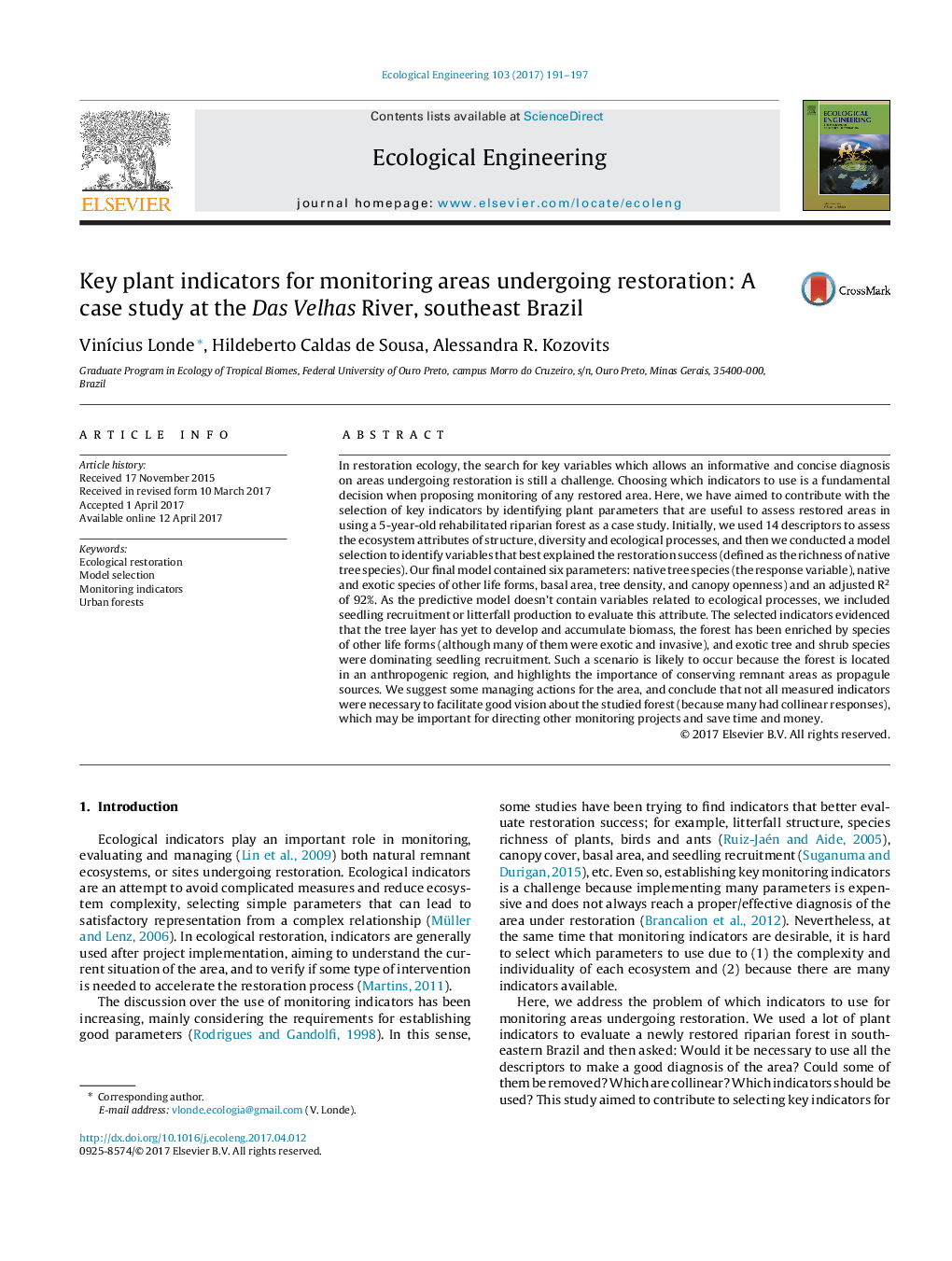| کد مقاله | کد نشریه | سال انتشار | مقاله انگلیسی | نسخه تمام متن |
|---|---|---|---|---|
| 5743578 | 1412315 | 2017 | 7 صفحه PDF | دانلود رایگان |
- Selection of key plant indicators for areas undergoing restoration is proposed.
- Seven indicators of structure, diversity, and ecological processes were chosen.
- The key plant indicators provided a proper diagnosis of the studied area.
- Ecosystem restoration of urban areas should prioritize the control of exotic species.
In restoration ecology, the search for key variables which allows an informative and concise diagnosis on areas undergoing restoration is still a challenge. Choosing which indicators to use is a fundamental decision when proposing monitoring of any restored area. Here, we have aimed to contribute with the selection of key indicators by identifying plant parameters that are useful to assess restored areas in using a 5-year-old rehabilitated riparian forest as a case study. Initially, we used 14 descriptors to assess the ecosystem attributes of structure, diversity and ecological processes, and then we conducted a model selection to identify variables that best explained the restoration success (defined as the richness of native tree species). Our final model contained six parameters: native tree species (the response variable), native and exotic species of other life forms, basal area, tree density, and canopy openness) and an adjusted R2 of 92%. As the predictive model doesn't contain variables related to ecological processes, we included seedling recruitment or litterfall production to evaluate this attribute. The selected indicators evidenced that the tree layer has yet to develop and accumulate biomass, the forest has been enriched by species of other life forms (although many of them were exotic and invasive), and exotic tree and shrub species were dominating seedling recruitment. Such a scenario is likely to occur because the forest is located in an anthropogenic region, and highlights the importance of conserving remnant areas as propagule sources. We suggest some managing actions for the area, and conclude that not all measured indicators were necessary to facilitate good vision about the studied forest (because many had collinear responses), which may be important for directing other monitoring projects and save time and money.
Journal: Ecological Engineering - Volume 103, Part A, June 2017, Pages 191-197
